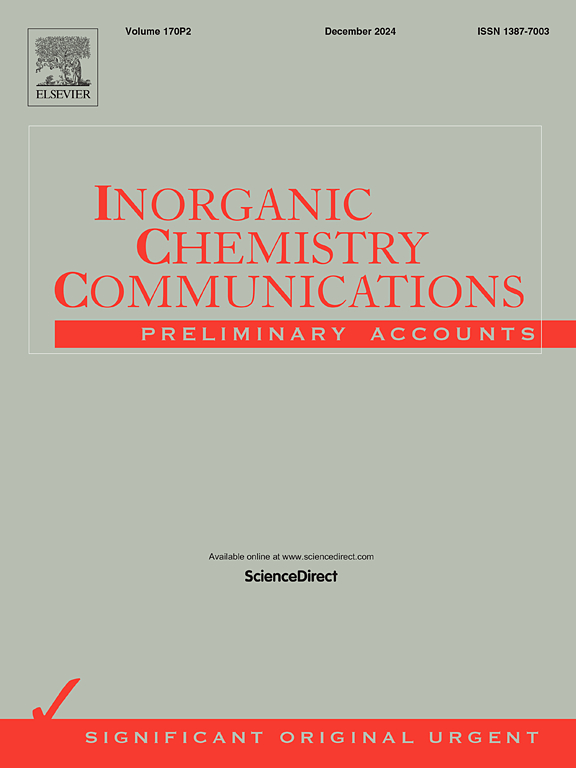绿色合成驱动的金纳米颗粒利用百合叶提取物的生物医学应用
IF 5.4
3区 化学
Q1 CHEMISTRY, INORGANIC & NUCLEAR
引用次数: 0
摘要
近年来,合成纳米粒子的化学方法因其对人体健康和环境的有害影响而引起人们的关注。为了克服这一障碍,研究人员正在寻找替代方法,其中环保合成方法受到了关注。然而,它们的毒性仍需要进一步验证。本研究以百合叶提取物为原料,通过一步法绿色合成金纳米粒子(Au NPs),旨在开发生物医学应用的生态友好型纳米粒子。对合成的金纳米粒子进行了光学、功能、结构和形态表征。Au NPs呈球形,平均尺寸为11.98 nm。采用RAW 264.7巨噬细胞、盐渍蒿(Artemia salina nauplii)和葱根尖细胞三个模型系统评估Au NPs的生物学效应。Au NPs在50 μg/ml浓度下与RAW 264.7细胞具有良好的生物相容性,在葱根尖细胞中有丝分裂指数最高可达73.93%,表明其能促进细胞增殖。此外,Au NPs在盐蒿的肠道区域积累而不引起死亡。这些发现表明,绿色合成的Au NPs具有生物相容性,并显示出许多生物医学应用的潜力,如药物输送,组织甚至植物再生。本文章由计算机程序翻译,如有差异,请以英文原文为准。

Green synthesis-driven gold nanoparticles using Lilium wallichianum leaf extract for biomedical applications
Recently, chemical methods for synthesizing nanoparticles have raised concerns due to their harmful effects on human health and the environment. To overcome this hurdle, researchers are looking for alternative approaches, with eco-friendly synthesis methods gaining attention. However, their toxicity still requires further validation. This study highlights the green synthesis of gold nanoparticles (Au NPs) using Lilium wallichianum leaf extract through a single-step method, aiming to develop eco-friendly NPs for biomedical applications. The synthesized Au NPs were characterized by optical, functional, structural, and morphological analysis. The Au NPs showed a spherical shape with an average size of 11.98 nm. The biological effects of Au NPs were assessed using three model systems: RAW 264.7 macrophage cells, Artemia salina nauplii, and Allium cepa root tip cells. The Au NPs showed biocompatible in RAW 264.7 cells at a concentration of 50 μg/ml, with a maximum mitotic index of 73.93 % in Allium cepa root tip cells, suggesting enhanced cell proliferation. Furthermore, the Au NPs accumulated in the gut region of Artemia salina without inducing mortality. These findings indicate that green-synthesized Au NPs are biocompatible and demonstrate a potential for many biomedical applications like drug delivery, tissue and even plant regeneration.
求助全文
通过发布文献求助,成功后即可免费获取论文全文。
去求助
来源期刊

Inorganic Chemistry Communications
化学-无机化学与核化学
CiteScore
5.50
自引率
7.90%
发文量
1013
审稿时长
53 days
期刊介绍:
Launched in January 1998, Inorganic Chemistry Communications is an international journal dedicated to the rapid publication of short communications in the major areas of inorganic, organometallic and supramolecular chemistry. Topics include synthetic and reaction chemistry, kinetics and mechanisms of reactions, bioinorganic chemistry, photochemistry and the use of metal and organometallic compounds in stoichiometric and catalytic synthesis or organic compounds.
 求助内容:
求助内容: 应助结果提醒方式:
应助结果提醒方式:


